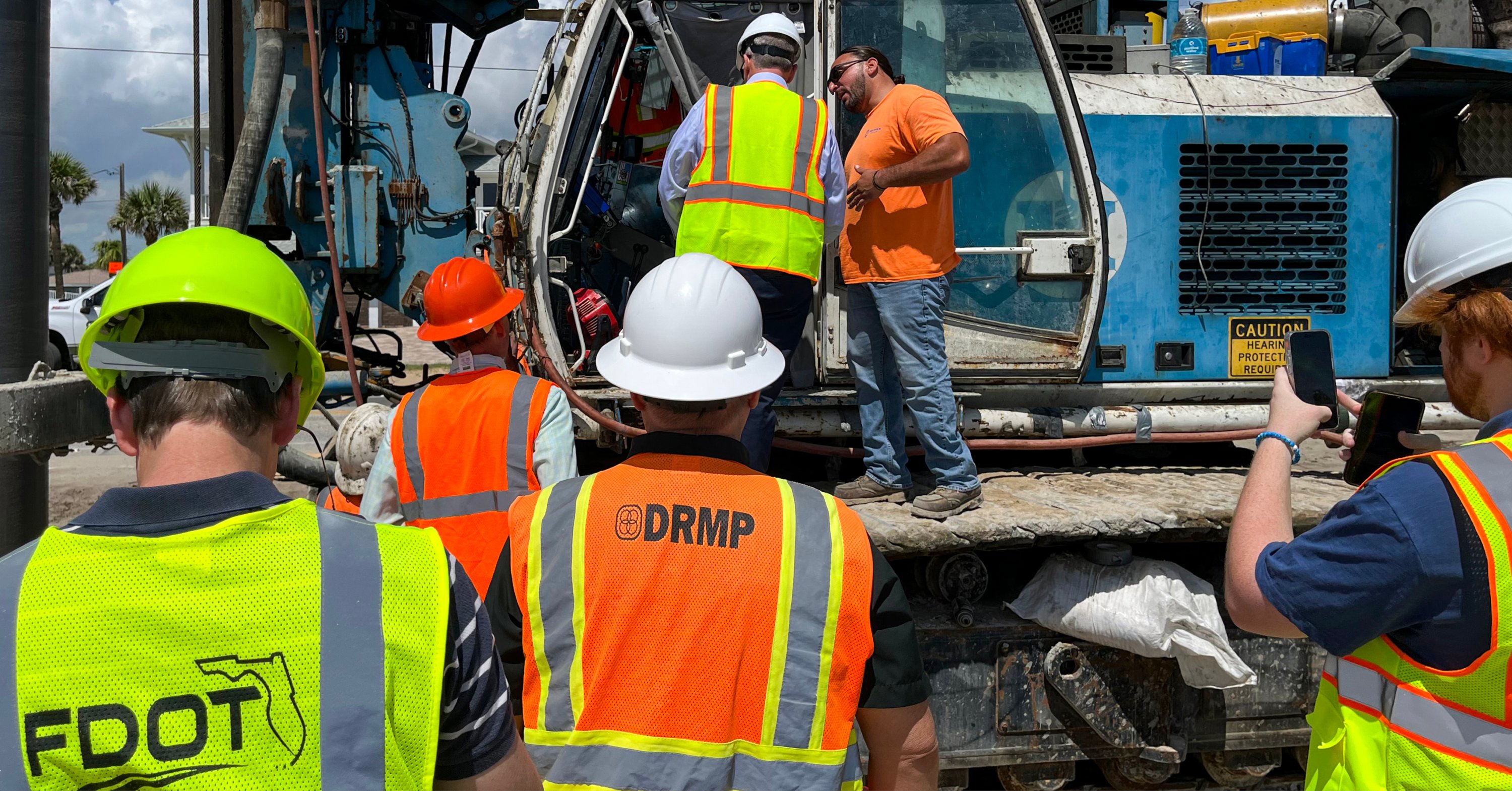New development projects, such as shopping centers and large residential neighborhoods, have the potential to impact the public, leading to modified traffic patterns and increased demands on existing transportation infrastructure.
DRMP’s Traffic Impact Analysis (TIA) team is ready to assist clients with TIAs for projects throughout the United States.
A Traffic Impact Analysis (TIA), also referred to as a Traffic Impact Study (TIS), plays a key role in planning and designing new developments and aims to mitigate effects on existing road networks, while ensuring safe and reasonable traffic operations.
To assess a development’s impact, qualified traffic engineers or planners conduct TIAs. Based on the outcomes of the analysis, mitigation measures, such as roadway and infrastructure improvements, may be recommended to offset traffic impacts.
The experience and skill sets brought forth by DRMP’s Traffic Analysis and Modeling team includes much more than providing a document. DRMP has extensive experience reviewing and analyzing traffic conditions, collaborating with the project team, working with state and local reviewing agencies, engaging with community stakeholders, presenting results and findings, and anticipating potential transportation issues with proposed developments early on.
When is a Traffic Impact Analysis (TIA) required?
While not always required, integrating a TIA into most projects proves beneficial. Typically required by state departments of transportation or local governments, a TIA becomes necessary when a proposed development is anticipated to increase vehicle trips beyond a specific threshold. The analysis provides critical information for all stakeholders to appropriately evaluate a project and decide whether it should be approved and modified.
The criteria for requiring a TIA vary depending on the location and magnitude of a project. A commonly acknowledged threshold for requiring a TIA arises when a project is expected to generate more than 100 peak hour vehicle trips. In certain regions, allowances may be made for a reduction in traffic generation, factoring in considerations, such as proximity to transit options or the previous use of the development site.
A standard TIA encompasses an evaluation of current and future anticipated roadway conditions without the project; calculation of the site trip generation and site trip distribution; an evaluation of future conditions with the proposed project; and identification of recommended improvements.
Mitigation Measures
Every TIA is unique to a project and transportation network. The transportation network proximate to the site, local environment, state and local guidelines, and community stakeholders requires a different approach to each study that can impact the corresponding conclusions and recommendations of the TIA.
Each TIA is conducted with site specific context. Existing and background traffic growth or network roadway changes result in a more complicated analyses and the need for innovative solutions.
Potential traffic solutions include but are not limited to:
- Intersection Design (including Installation or Modifications to Traffic Signals, Stop Controls, Roundabouts, etc.)
- Turn Lanes and Roadway Widening
- Pavement Markings and Signage
- Multimodal Facility Upgrades (Pedestrian, Bicycle, and Transit)
- Transportation Demand Management (TDM)
- Lighting and Safety
Designing Safe, Efficient School Traffic
DRMP also prepares traffic studies for school projects to address the important issues of school traffic impacts on the surrounding roadways as well as traffic flow on the school campus. Traffic Management Plans are developed working with school representatives and departments of transportation, which are provided to teachers, staff, and parents to organize and control traffic flow on and around the school campus.
Traffic impacts vary by school type. Elementary schools often experience more parent drop-offs; middle schools typically see less traffic; and high schools must account for both parent drop-offs and student drivers. Additionally, public schools usually offer bus services, while private schools often do not –leading to increased parent traffic. Our goal is to account for these nuances to improve traffic management and enhance safety for everyone involved.
To minimize congestion and prevent vehicles from queuing on surrounding roads, schools should plan for efficient on-campus vehicle stacking. Effectively managing expected queues helps optimize space use, reduces the need for extensive paving, and minimizes property impacts. When feasible, separating parent drop-off/pick-up areas from bus and student driver traffic can further enhance operational efficiency and safety on campus.
As we navigate the demands and challenges of development, the impact on transportation is inevitable. The integration of TIA is crucial to ensuring new projects are executed with foresight that mitigates effects on existing road networks.
The necessity for a TIA is not universal, but its benefits undoubtedly provide critical information for stakeholders to evaluate, approve, and modify projects appropriately. From installing traffic signals to upgrading multimodal facilities, these solutions provide a well-rounded approach to keep traffic safe and moving smoothly. TIAs are a key step toward creating sustainable, resilient, and well-planned communities.
If you are interested in having a traffic impact analysis conducted for your project, please click here.
John Schick, PTP, serves as Traffic Analysis Group Leader for DRMP’s Transportation Market Sector.
Rynal Stephenson, PE, serves as Chief Traffic Analysis Engineer for DRMP’s Transportation Market Sector.



















